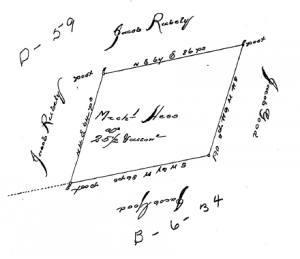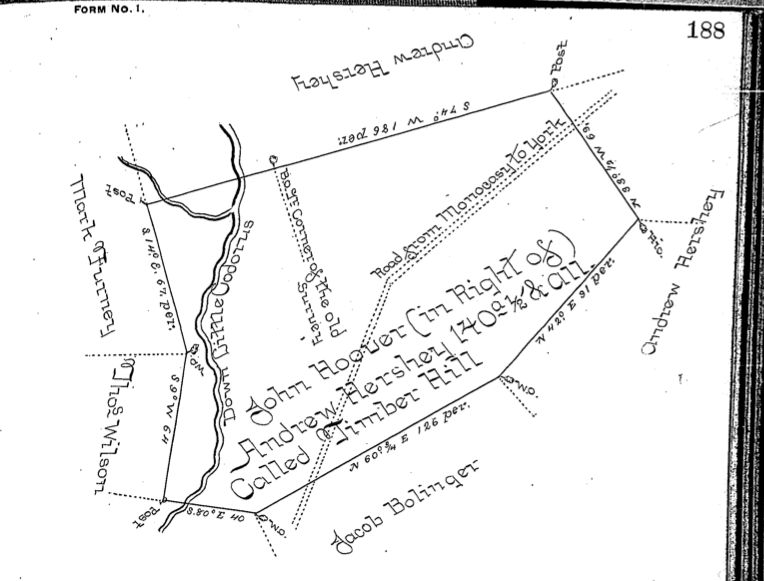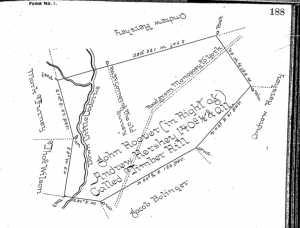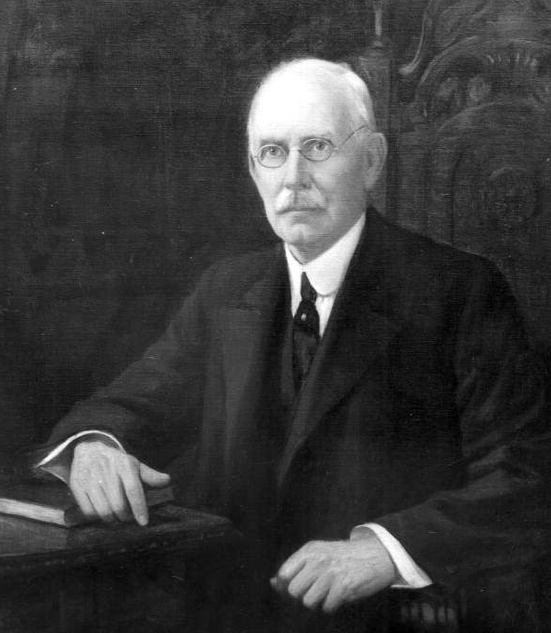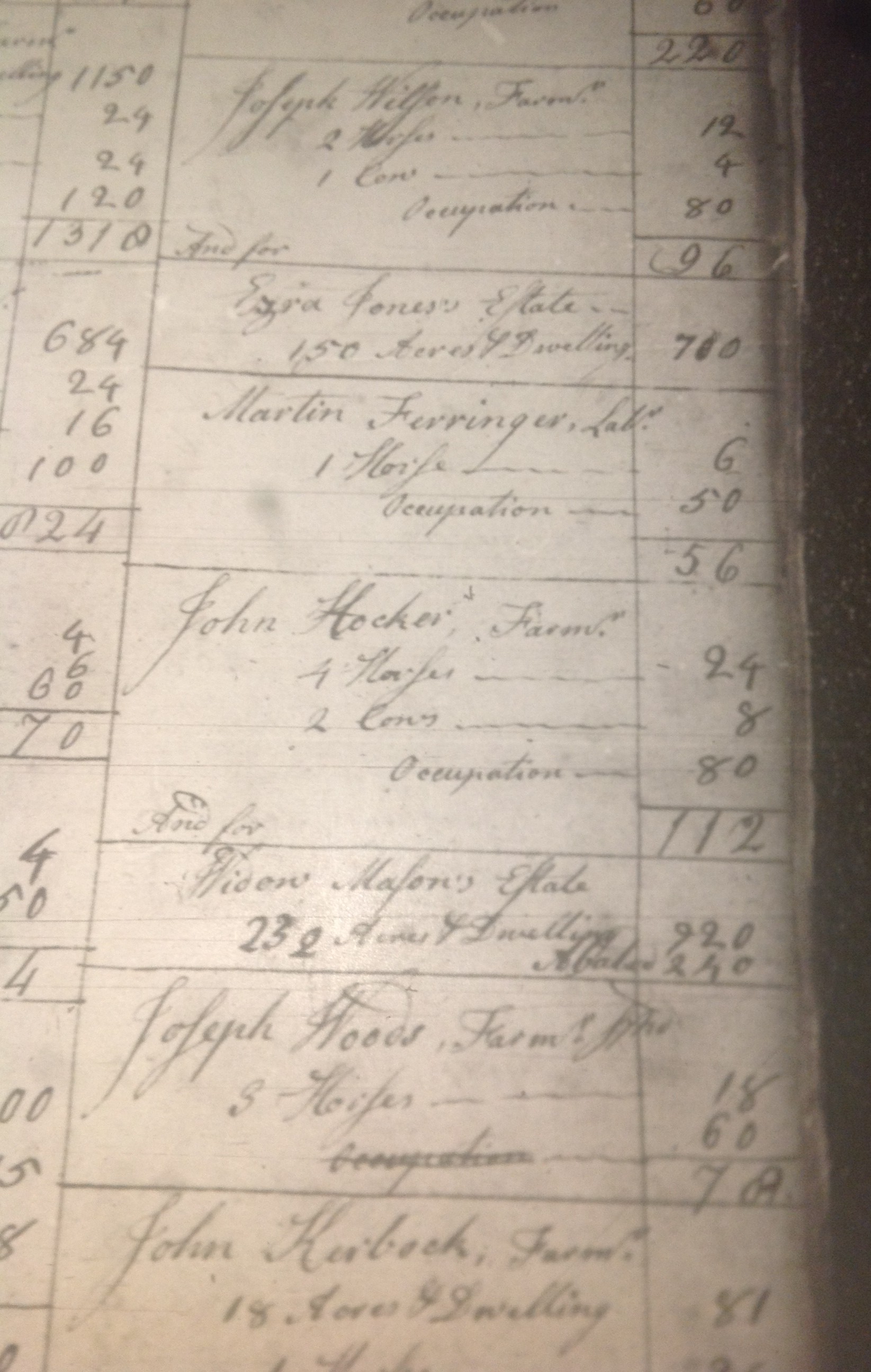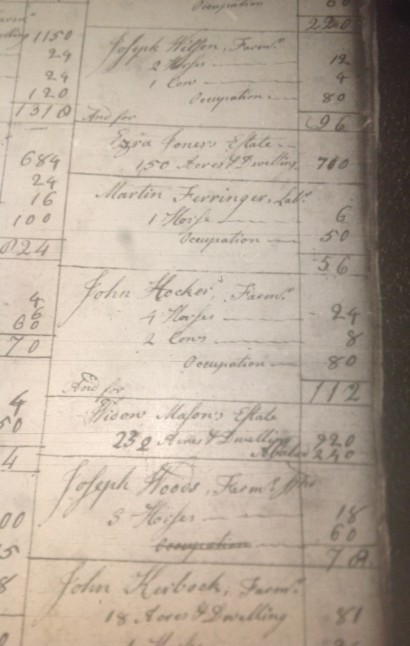Have you ever had the experience of researching information you found in a family genealogy book and discovering that it was wrong? How did you feel—triumphant that you’d discovered something the author got incorrect or maybe slightly embarrassed for them?
I have very mixed feelings. You see the author was my great uncle, the man who got me interested in genealogy.
The family in question is that of Margaret Haushalter, daughter of Lorentz and Anna Margaretha (Hacker) Haushalter. Margaret was born 4 July 1754 in Cocalico Township, Lancaster County, Pennsylvania and baptized on 28 July 1754 in Emanuel Lutheran Church. According to A German-American Hacker-Hocker Genealogy, Margaret married circa 1774 Jacob Oberlin. He was born 15 July 1747, son of Johan Adam Oberlin, and baptized 26 July 1747 in Emanuel Lutheran Church. There is no source indicated for the marriage.
The records of Emanuel Lutheran Church include the following children of Jacob and Margaretta Oberlin/Oberle:
- Unnamed child, born ca 1782
- Barbara Oberlin, born 8 Aug 1783, baptized 7 Oct 1783, sponsors: Lorentz & Margaretha Haushalter
- George Oberlin, born 25 Sep 1785, baptized 20 Nov 1785, sponsors: Lorentz & Margaretha Haushalter
- Jacob Oberlin, born 10 Apr 1787, baptized 13 May 1787, sponsors: Rudulph & Barbara Schaefer
- Catharine Oberlin, born 21 Jul 1789, baptized 23 Aug 1789, sponsors: George & Catharina Stober
- Eva Oberlin, born 15 Sep 1791, baptized 16 Oct 1791, sponsors: Michael & Anne Marie Oberle
You’ll notice that Margaretha’s parents were sponsors for both Barbara and George Oberlin in 1783 and 1785. Catharine’s sponsors in 1789 were likely George and Catharina (Haushalter) Stober, Margareth’s brother-in-law and sister.
Jacob and Margaret Oberlin were sponsors for:
- Jacob, son of Christoph & Catharine Oberly, born 30 Jul 1775, baptized 14 Aug 1775, as “Jacob Oberly & Margaretha Webern”
- Christina, daughter of Peter & Christina Beinhauer, born 23 Aug 1777, baptized 30 Sep 1777
- Joseph, son of George & Agatha Hofmann, born 19 Mar 1788, baptized 4 May 1788
I found additional baptism records for children of Jacob and Margaret Oberlin/Oberly in Reiher’s Reformed Church, also in Brickerville:
- Elizabeth, born 6 Jan 1777, baptized 28 Jan 1777, sponsors: Agatha Oberlin (Jacob’s mother)
- Christine, born 3 Apr 1778, baptized 3 May 1778, sponsors: John Peter & Christine Beinhauer
- Elizabeth, born 19 Sep 1788, baptized 21 Nov 1788, sponsors: the parents
Now, none of this seems to contradict Wingeard’s statement that Margaretha Haushalter married Jacob Oberlin/Oberle. The fact that her parents and brother-in-law and sister were sponsors seems to support that statement.
However, I also found the following in the Cocalico Reformed Church records:
- “Jacob Oberlin, Lutheran, son of Adam Oberlin, m. Margaret Weber, Ref., dau. of George Weber, on April 30, 1776.”
- “Nicholas Vogelgesang, son of Philip Vogelgesang, single, Lutheran, m. Margaret Haushalter, Lutheran, dau. of Lorentz Haushalter, on February 25, 1777.”
It doesn’t get much more explicit than that. According to these records Jacob Oberlin and Margaretha Haushalter married different people, not each other!
Emanuel Lutheran church records have baptisms for three children of Nicholas and Margaretha Fogelgesang/Vogelgesang:
- Christina, born 19 Jun 1779, baptized 4 Jul 1779, sponsors: Wilhelm Stober & Christina
- Susanna, born 17 Nov 1782, baptized 18 Nov 1782, sponsors: Fridich Adam & Barbara
- Catharine, born 10 Jun 1784, baptized 25 Jul 1784, sponsors: Catharine Haushalter
They were also sponsors for:
- Susannah, daughter of Christian & Ann Wiland, born 31 Jul 1780, baptized 9 Sep 1780
Lorentz Haushalter’s will, written 19 Jul 1800, mentions “the heirs of my daughter Margaret, deceased.” So, Margaretha Haushalter died prior to 19 Jul 1800. However, Jacob Oberlin’s wife Margaret was still alive in 1801 when an account was apparently filed for his estate by his administratrix Margaretta Oberlin.
But what about all those baptismal records? Why were Margaret’s parents and sister sponsors for Jacob and Margaret (Weber) Oberlin?
The simple answer is probably that they were neighbors and members of the same church. A petition of Jacob Lehman, husband of Jacob Oberlin’s eldest daughter, for the partitioning of Jacob’s land after his 1793 death names George Weidman, Lawrence Householder, and Christian Oberlin as the adjoining land owners. Additionally, George Stober was most likely related to Jacob Oberlin’s mother Catharine Agatha Stober, making George and Jacob cousins. The other sponsors of Jacob’s children were either his or his wife’s siblings.
All of Nicholas and Margaret Vogelgesang’s children baptized at Emanuel Lutheran were sponsored by Margaretha Haushalter’s relatives. Wilhelm and Christina Stober were her cousins through her mother and Christina’s mother—both Hackers. Friedrich and Barbara Adam were Margaretha’s sister and brother-in-law and Catharine Haushalter, possibly her sister.
Conclusions
I’ve said it before, but it bears repeating. A genealogy—published or not—is only as good as the research and analysis that had been done to date. There may have been resources that were not available. You, the reader, have no way of knowing how accurate the content is unless you can assess the research that went into it—and by extension, what didn’t go into it. That is the reason why source citations are necessary.
In this case, my uncle did not provide the source of his information or how he reached his conclusions. I don’t know if he had more information than he included in the book or not. I can only assess his conclusions based on the information he included and the additional data that my research found.
Based on what I know—right now—I can only conclude that the book is wrong.


